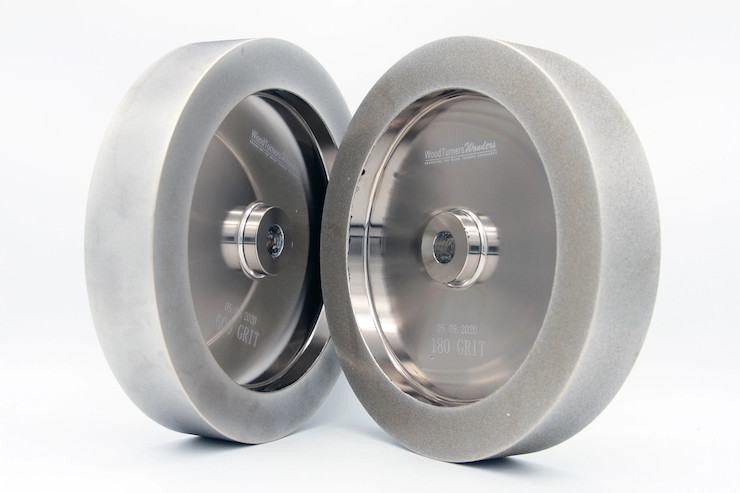Diamond Stones
I use and like diamond stones for sharpening. I have very specific needs and requirements. Diamond stones may not be for you. If I had a different workshop, I would probably add a very fine waterstone to my setup.
Cons of Diamond Stones
- Not available in very fine grits
- Expensive
- Terrible for lapping (wear out quickly)
- No mirror finish
Pros
- Can use dry, No oil or water required
- Fast cutting
- Long lasting (some more than others)
- Very flat (if you buy the good ones)
- Easy to store and transport.
- Can sharpen very hard steel and carbide
- No need to flatten
I specifically like diamond stones as I have a very small workshop. I don’t need to maintain a dedicated sharpening station. I keep my sharpening supplies in a tray which goes on a shelf when not in use. While its recommended to use some lubricant with diamond stones, I generally use them dry, cleaning them off with an eraser every so often. I live in a high humidity area, and struggle to keep my tools rust free. Bringing extra water into my workshop is the last thing I want to do. While oil does not have the same risks with regard to rust. In my small shop and 4 foot long bench, spills would be inevitable, and I don’t want to have to deal with them. In addition, there is no climate control in my shop, I would have to worry about water stones that require soaking actually freezing.
The downside of using exclusively diamond, is that I would like to have a finer finishing stone. Diamond stones top out at about 1200 grit. DMT sell an extra extra fine stone, which works out at about 4000 grit. I have one, but after a year I was having an hard time getting a good edge, and when I put it under a microscope I realized most of the diamond was gone, and using that plate was actually damaging, rather than refining the edge.
You can get a very sharp good edge from a combination of a 1200 grit diamond stone and a strop. Chromium oxide on leather is about 45000 grit, exceeding the finest of sharpening stones, but the edge from stropping is never going to be as even as the edge from a stone. On some tools I have found it can be a lot of work to remove the last of the burr on a strop.
My current process is to go from the 1200 grit stone, to a chromium oxide strop, to a diamond paste (0.1 micron/250,000 grit) strop. When it works well, I get an exceedingly good edge, but sometimes the 1200 to 45000 grit jump makes for a lot of work. I’m currently experimenting with a 3000 grit cheap diamond stone as an intermediate step, but its too early to say if the 3000 grit stone is worth it.
I tend to use my stones dry, but if you want to lubricate I would recommend car window cleaner fluid (it has a little bit of rust inhibitor in it). Many vendors sell very expensive honing oils for diamond stones. They are not worth the expense.
When it comes to buying diamond stones, I recommend the Atoma brand. My first diamond stone was a Trend double sided stone. I wore it out after about 1 and a half years. In fairness to the stone, I lapped a lot of vintage blades on it, and probably used far too much pressure on it in the beginning. Hard pressure on a diamond stone tends to break off diamonds. They only ever need light pressure. However later checking also revealed that the stone was not quite flat, so I moved on.
My next stones where DMT. I bought the extra coarse and extra extra fine. They where very flat, but both wore out. I’ve gone off very coarse diamond stones. The size of the diamonds makes it too easy to knock them off in use. I now use 60 grit sandpaper on float glass for anything that needs that kind of aggressive cutting power. The extra extra fine also wore out. In its case, I have no idea why it failed.
I then bought Atoma coarse, medium and extra fine (140/400/1200) a year and a half ago, all are working as well now as when I bought them. All are very flat. If I eventually wear them out, I’ll probably re-buy Atoma.
As mentioned above, I avoid using my diamond stones for lapping when restoring tools. On a new tool, I may flatten the back of a chisel or iron on them if it looks like they only need a little work. Otherwise I go to sandpaper and stay on sandpaper. No sandpaper solution is as flat as a good diamond stone, and I find moving from paper to diamond just results in it still needing an awful lot of work on the diamond stone, and sandpaper flattening is more than good enough for most tools.
In addition to my primary bench stones I also have a collection of very cheap diamond plates I use for miscellaneous sharpening tasks. These are very cheap and available in a wide range of grits (60 to 3000). They are however polycrystalline diamond rather than the monocrystalline found in the more expensive diamond plates. Polycrystalline diamonds fracture far more easily and as a result the plates wear very quickly. I once wore out a 60 grit plate in a single session of flattening a chisel back. All diamond stones have a breaking in period. The occasional stray diamond thats sticking up a little higher than the others get knocked off, until this happens they cut very aggressively for a short period of time and can leave deep scratches.
The cheap stones are smaller than the more expensive diamond stones, but this can be an advantage. I have a set of EZE-Lap diamond paddles that I have found to be a very flexible sharpening tool. They can be used on auger bits, draw knives and many other tools. As with a lot of my diamond sharpeners, they very coarse paddle wore relatively quickly, all of the other grits are still working well years after purchase. A cheaper import version is widely available in the form of diamond paddles for knife sharpening jigs.
The last diamond based sharpening tool I have gotten a lot of use out of is the “Diamond Wave” created by DMT. This is a diamond plate in the shape of a wave designed to make honing tools like in-cannel and out-cannel gouges simple to sharpen. Simply find a point on the wave that matches the curve of the tool and work it there. The wave is available in 600 and 1200 grits. Some other manufacturers now produce double sided versions with a coarse grit on one side and a fine on the other.
If I were new to woodworking. I would probably buy a 400, 1200 and 3000 grit cheap plate and attach them to plywood to keep them fairly flat and work away. These are not going to be stones you get to use for years, but at €5 each including delivery, they dont have to last very long to be cheaper than sandpaper. I would stick to sandpaper for lapping the backs of irons and chisels. If you stick with woodworking long enough, you may want to consider swapping out some of the stones for the flatter longer lasting Atoma stones. The 1200 grit would be the first one I would bring in.
In summary, I like diamonds for sharpening, but would recommend avoiding the extremely coarse or fine plates. If you are going to use a 1200 grit stone as your final stone, you will benefit from stropping with compound afterwards.
Some useful links:
A demonstration of the DMT Diamond Wave
https://www.youtube.com/watch?v=2GsAKcjZMXU
Paul Sellers demonstrating sharpening a chisel on diamond stones
https://www.youtube.com/watch?v=a6ykVzL2VAM&t=53s
Stumpy Nubs overview of the breaking in process
https://www.youtube.com/watch?v=Hjq-iI1ZuQI
Paul Sellers on making a sharpening plate holder. I use a more complicated version as my movable sharpening station.
https://www.youtube.com/watch?v=dVsfkVR9VmI
Rex Kreuger on using cheap diamond plates
https://www.youtube.com/watch?v=f4BEQeW8cdo&t=4s
(I dont think scary sharp is dead, particularly when the papers go all the way to 1 micron)
An overview of the EZE-Lap diamond paddles
https://www.youtube.com/watch?v=UrHUDvzYGAQ
A source for cheap diamond plates
https://www.aliexpress.com/item/1005002443085488.html
A source for cheap diamond paddles
https://www.aliexpress.com/item/1005002711942706.html
This and other tool diversions are archived at https://blog.vintagetoolpatch.com , if you would like to write one, let me know!
Atoma Diamond Stones are my personal favorite.
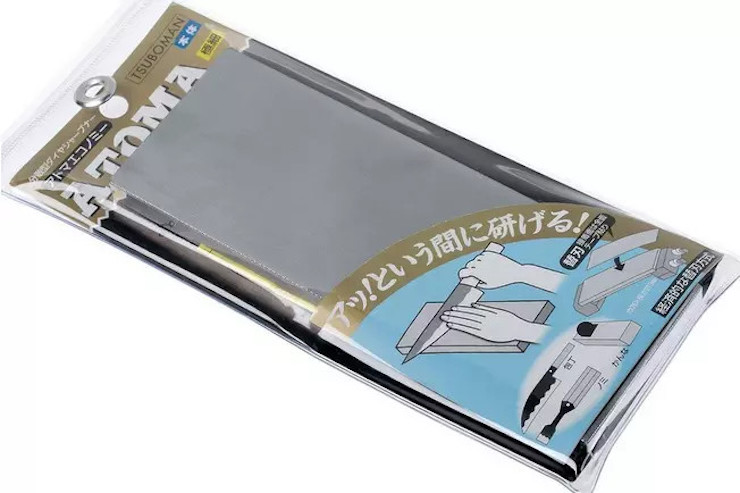
The surface of an Atoma stone. The diamonds are placed in regular clusters creating channels for swarf to be carried away.
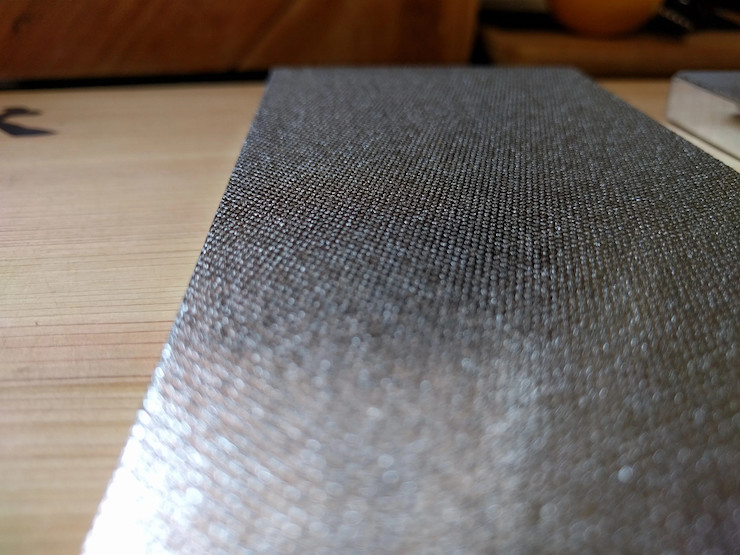
A cheap 3000 grit diamond plate I’m using as a final stone. So far its working well, but I’m interested to see how well it wears, and how it deals with environmental changes. Total cost is only €5 including shipping.
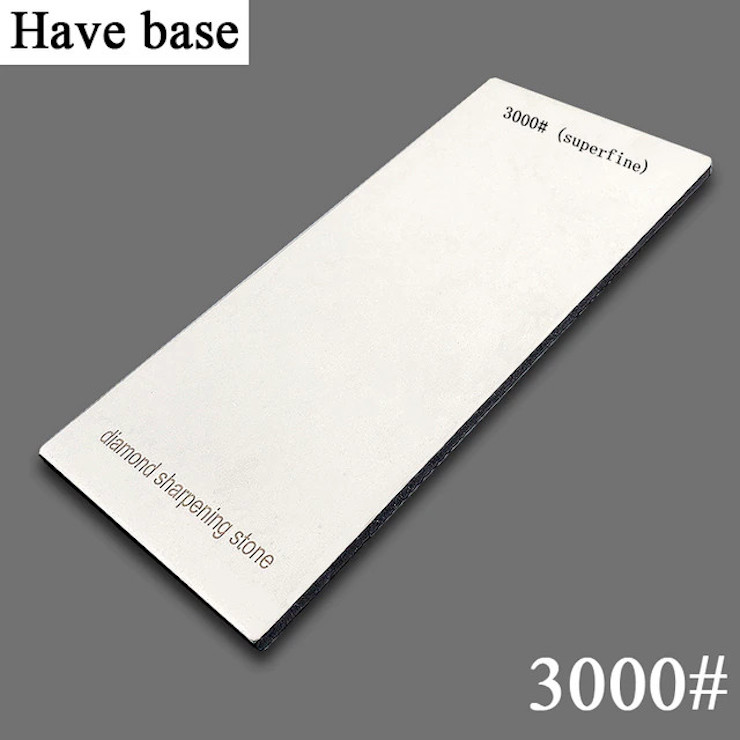
My Sharpening Tray. A 1200 grit Atoma Plate, Then a cheap 3000 grit plate, Then a chromium oxide strop, then a 0.1 micron diamond paste strop. Above, a Veritas honing guide with a cambered roller. A Veritas Guide with a standard roller and narrow blade adaptor. Angle setting jig for the veritas guides. Record honing guide for very cambered irons. An eraser for cleaning diamond plates. An adaptor for honing Vertias router irons. A spray bottle of car windscreen cleaner for lubricant, and a small ruler for the ruler trick. Normall there would be a 400 grit plate instead of the 3000 grit plate, but for most touch up sharpening I dont need it, so If the 3000 grit plate proves to be a keeper it will live in a drawer.

Cleaning a diamond plate with an eraser (just a normal pencil eraser).
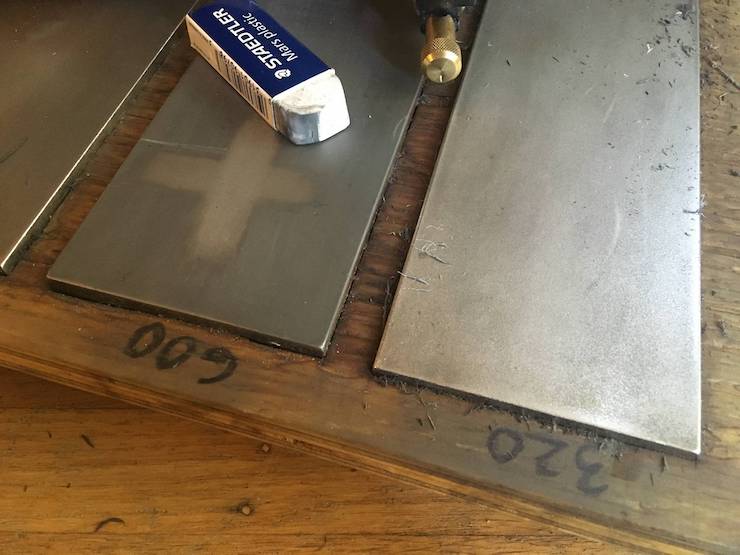
Cheap diamond paddles. These are designed for knife sharpening jigs. I’ve found them very useful for spokeshave irons and drawknives. The coarser grits wear a lot faster than the EZE-Lap paddles.
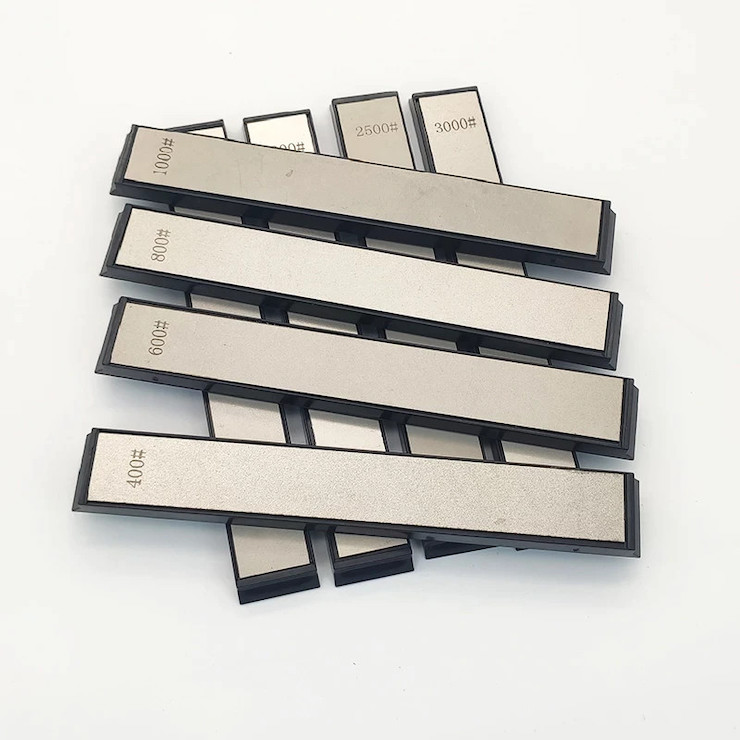
The DMT diamond wave, makes sharpening gouges pretty simple.
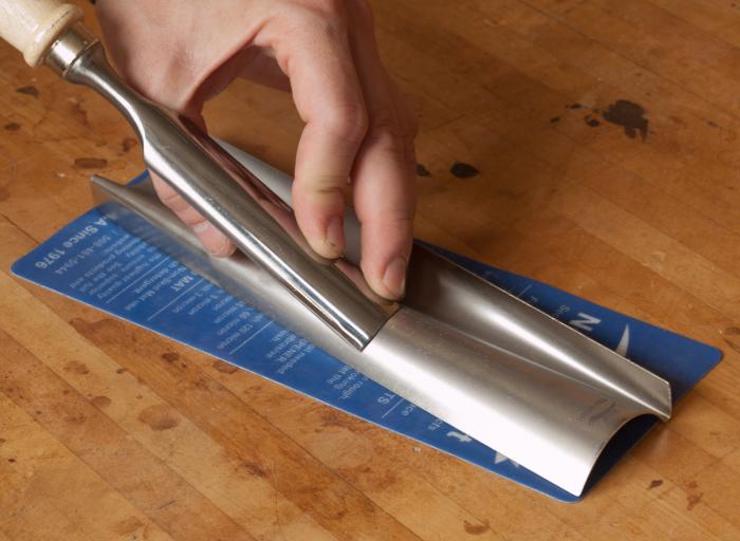
The wave in use for both in-cannel and out-cannel gouges.
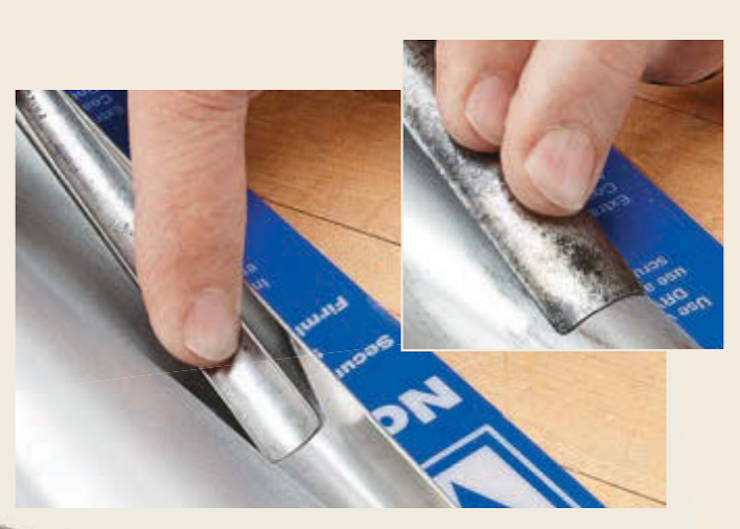
The Fulton Diamond Curve. A double sided version of the wave with 2 grits.
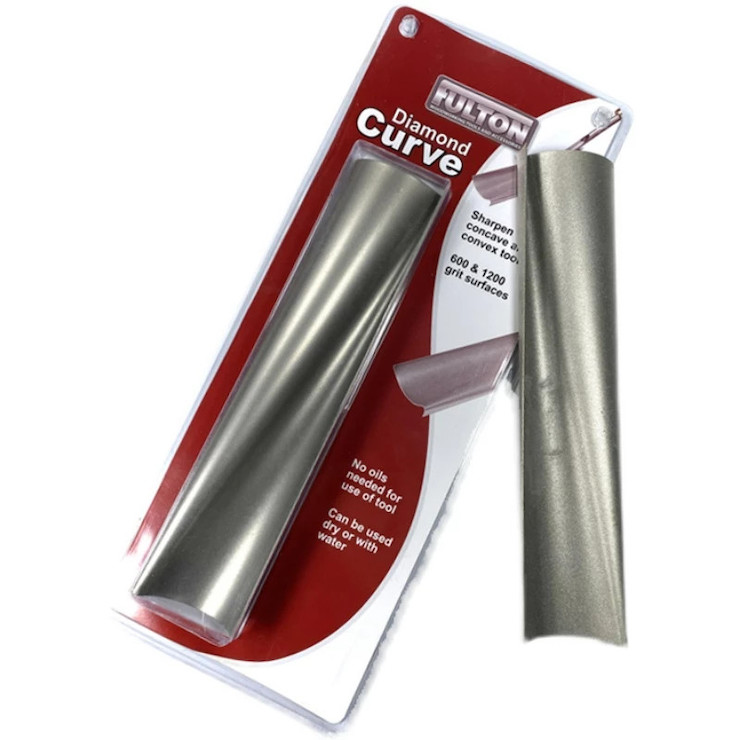
EZE lap paddles. Very flexible tools and very long lasting (except for the coarse and extra coarse).
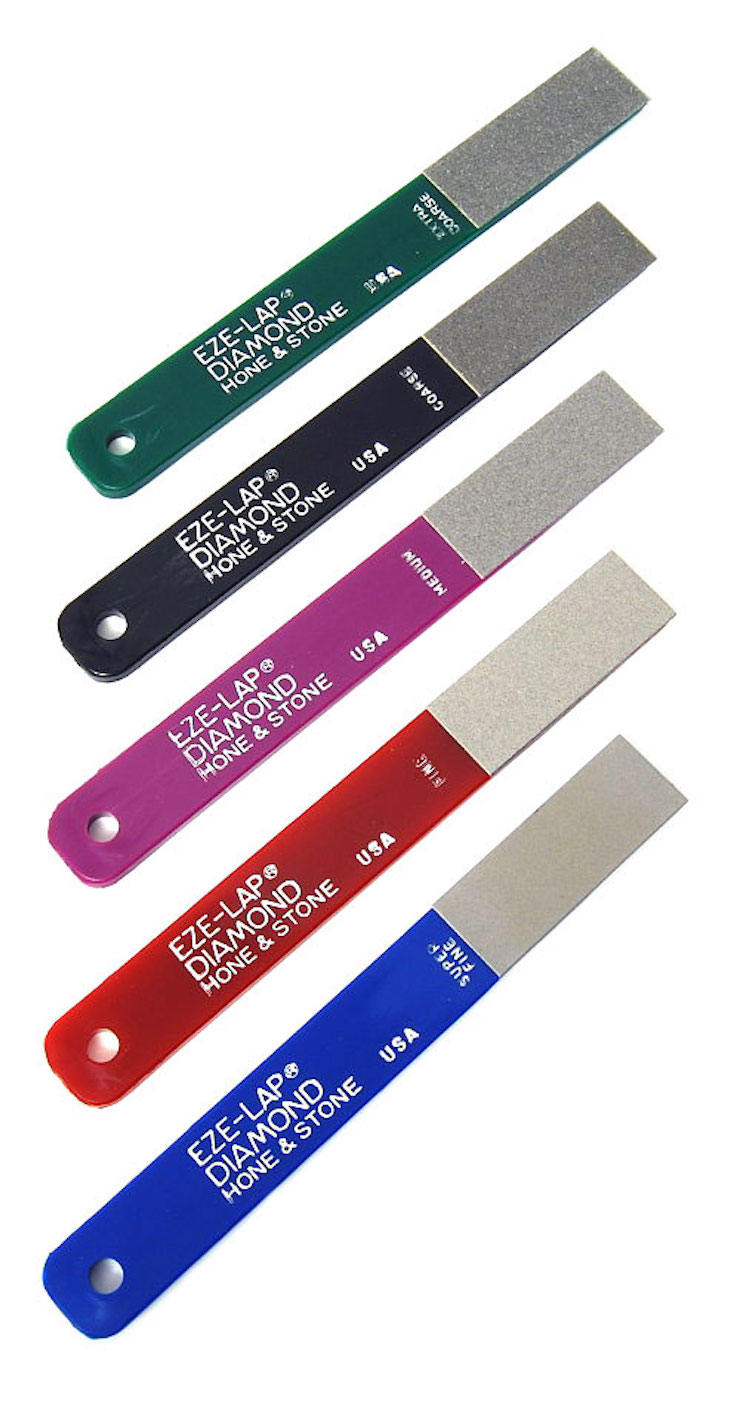
The Ruixin Pro Sharpening jig the cheap paddles are designed for. Its an OK jig, not as rigid as you would probably like, but I’ve used it to reset bevels on a variety of tricky tools. If Diamond is not your thing, they also sell waterstone paddles.
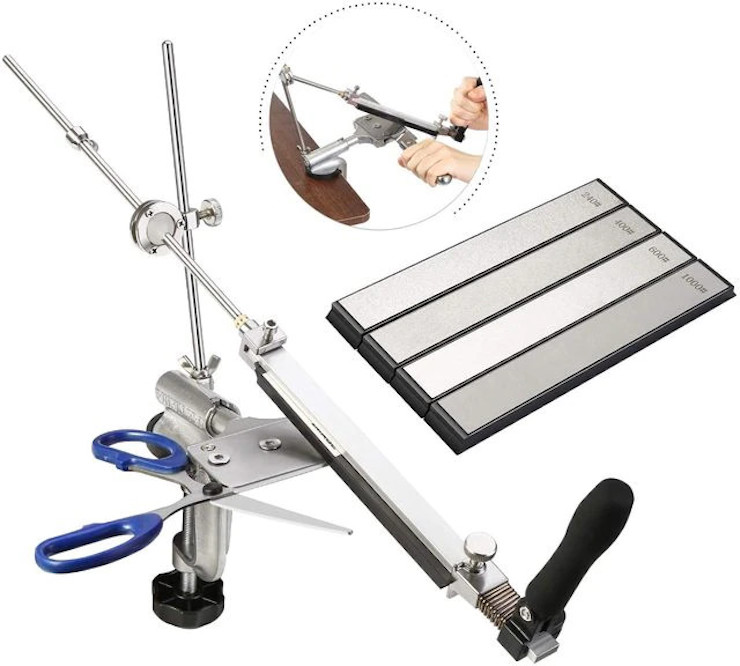
My next not quite diamond experiment will probably be a CBN wheel for my grinder. They dont get smaller like a traditional wheel, so no need to adjust your jigs. Cut fast, stay cool, and on some models the large side surface can be used to do a flat grind. (all this is what I have heard, later in the year I hope to buy one and find out).
